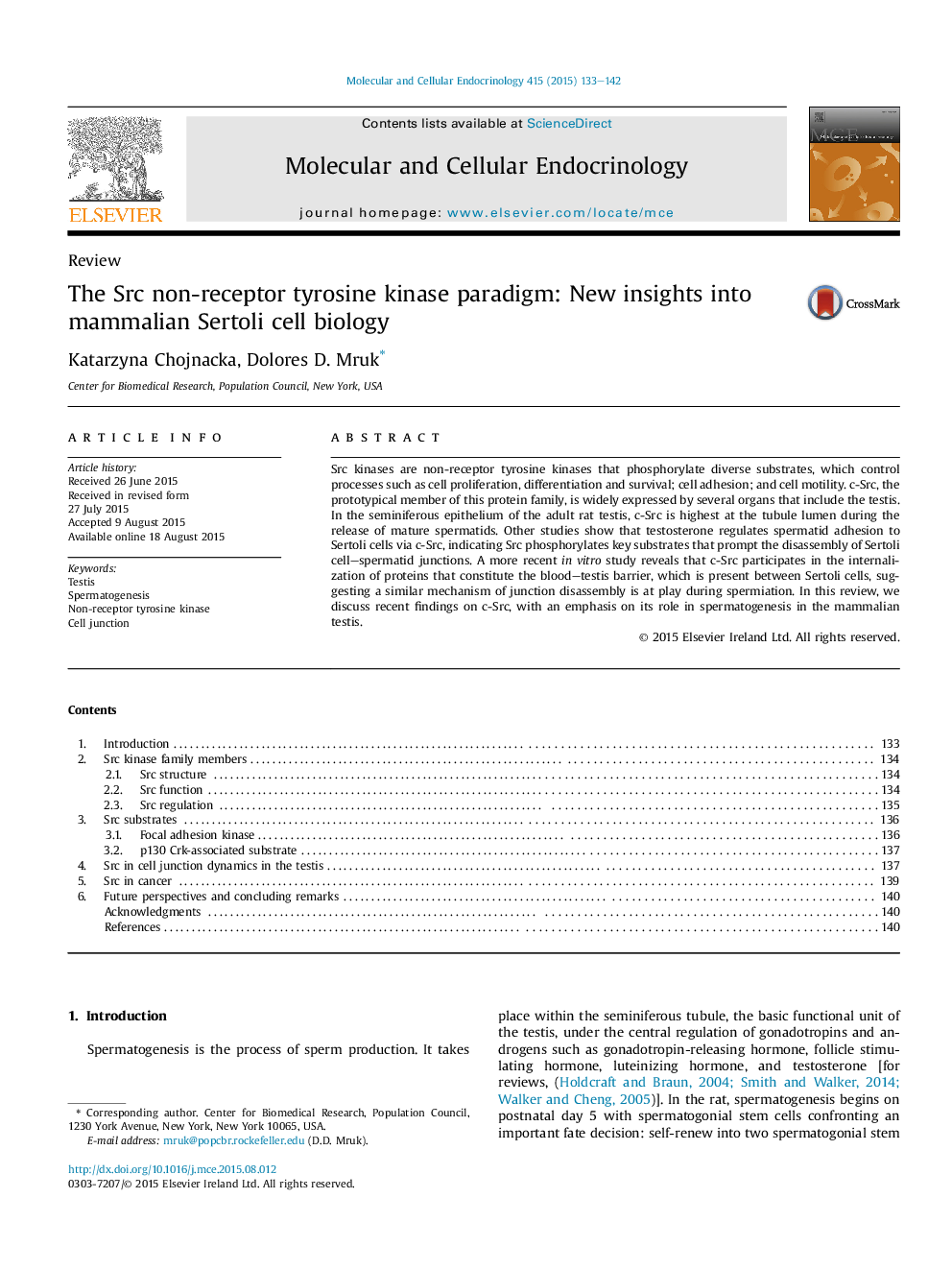| Article ID | Journal | Published Year | Pages | File Type |
|---|---|---|---|---|
| 2195692 | Molecular and Cellular Endocrinology | 2015 | 10 Pages |
•c-Src, a non-receptor tyrosine kinase, is expressed by both Sertoli and germ cells in the mammalian testis.•Germ cell adhesion and detachment involves the activation of c-Src by nonclassical testosterone signaling.•c-Src-mediated disassembly of Sertoli cell–spermatid junctions during spermatogenesis likely involves an endocytic mechanism.
Src kinases are non-receptor tyrosine kinases that phosphorylate diverse substrates, which control processes such as cell proliferation, differentiation and survival; cell adhesion; and cell motility. c-Src, the prototypical member of this protein family, is widely expressed by several organs that include the testis. In the seminiferous epithelium of the adult rat testis, c-Src is highest at the tubule lumen during the release of mature spermatids. Other studies show that testosterone regulates spermatid adhesion to Sertoli cells via c-Src, indicating Src phosphorylates key substrates that prompt the disassembly of Sertoli cell–spermatid junctions. A more recent in vitro study reveals that c-Src participates in the internalization of proteins that constitute the blood–testis barrier, which is present between Sertoli cells, suggesting a similar mechanism of junction disassembly is at play during spermiation. In this review, we discuss recent findings on c-Src, with an emphasis on its role in spermatogenesis in the mammalian testis.
